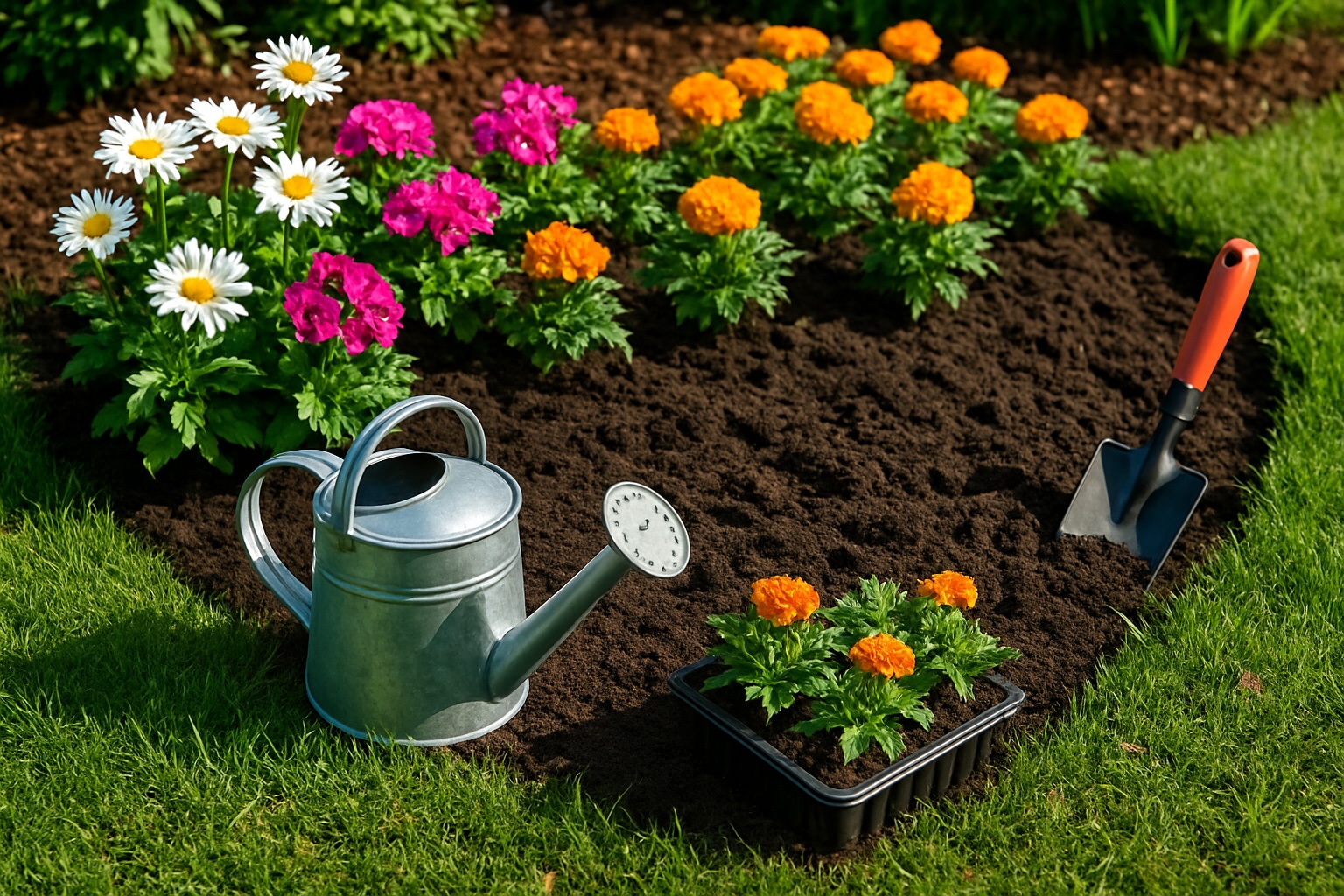As the spring chill fades and the Georgia sun warms up, it’s time to start preparing atlanta beds for summer blooms. Atlanta’s warm climate and long growing season make it ideal for a wide range of summer flowers. But success starts with solid preparation. Whether you’re working with raised beds, in-ground plots, or container setups, this guide walks you through everything you need to know to get your garden blooming beautifully.

Assessing Your Garden Beds After Spring
Before jumping into planting, take a moment to assess the current condition of your garden beds. Look for signs of weed growth, compacted soil, or leftover debris from spring blooms. Clear away dead plants and rake the surface to expose the soil underneath. This gives you a fresh canvas for summer color.
Amending the Soil for Summer Growth
Atlanta’s soil can be heavy and clay-rich, which means aeration and soil amendment are often necessary. Mix in organic compost to improve drainage and enrich the nutrient profile. If you’re planting heavy feeders like zinnias or cosmos, add a balanced slow-release fertilizer to support ongoing blooms.
If you haven’t already done so this season, it’s a great idea to revisit spring fertilization strategies to ensure your beds are ready. Learn more in our Atlanta Spring Lawn Fertilization Guide.
Choosing the Right Summer Flowers
Select heat-tolerant, sun-loving blooms to thrive in the Georgia summer. Great options include marigolds, lantana, verbena, salvia, and coneflowers. These flowers love the sun and attract pollinators while resisting drought conditions. Group plants with similar water needs together to simplify your care routine.
For an extra burst of pollinator appeal, consider incorporating yarrow into your beds. It’s hardy, easy to grow, and adds textural interest to summer arrangements.
Creating an Efficient Watering Schedule
Water deeply and early in the morning to avoid evaporation and discourage fungal diseases. Drip irrigation systems or soaker hoses help maintain even moisture. During hot spells, check beds daily to ensure soil doesn’t dry out completely.
Mulching goes hand in hand with watering efficiency, which we’ll cover in more detail below.
Mulching and Weed Control
Apply a 2–3 inch layer of mulch to retain soil moisture, suppress weeds, and regulate temperature. Pine bark, straw, or shredded leaves all work well in Atlanta gardens. Avoid piling mulch against plant stems, as it can cause rot.
Mulching is especially helpful in gardens transitioning from spring to summer growth, when weeds try to sneak in while your new blooms are still establishing themselves.
Maintaining Beds Through the Summer
Regularly deadhead spent flowers to promote new blooms. Monitor for pests like aphids or spider mites, which can show up in hot, dry weather. Use natural remedies like neem oil when possible, and remove heavily infested plants quickly.
If pests persist, explore low-toxicity solutions in our guide to natural pest control for Southern gardens.
Planning for Succession Planting
To keep your flower beds looking full all summer, consider succession planting. After early bloomers fade, replace them with later-flowering varieties. Staggering your planting timeline ensures continuous color from May through September.
Planning for waves of color not only makes your garden look dynamic — it also allows you to experiment with different bloom heights, fragrances, and pollinator patterns throughout the season.
Tips for Urban Gardeners in Atlanta
If space is limited, you can still enjoy vibrant summer blooms in containers or raised beds. Use quality potting mix and ensure containers have proper drainage. Balcony gardeners should choose compact, drought-tolerant species for best results.
Consider creating vertical gardening setups using hanging planters or stacking beds to maximize sunlight exposure. Herbs like basil and mint can thrive alongside ornamental flowers in the same planter with a little spacing.
Using Native Plants for Easier Success
Native flowers such as black-eyed Susans, purple coneflowers, and coreopsis thrive in Atlanta’s summer climate with minimal intervention. These species are already adapted to the soil and weather patterns, reducing the need for chemical fertilizers and intense maintenance.
Plus, they provide essential habitat for local pollinators. Native planting is a win-win for sustainability and low-maintenance design.
Where to Find Trusted Planting Advice
For more localized gardening guidance, the University of Georgia Extension Service offers region-specific advice on everything from soil testing to plant selection. Their resources are especially helpful for new gardeners or anyone unfamiliar with Georgia’s planting zones.
Final Thoughts
When it comes to preparing Atlanta beds for summer blooms, success lies in a thoughtful foundation. Clear out the old, build up the soil, and choose resilient, sun-loving plants that will keep blooming long into the season. With good watering habits, strategic planting, and a touch of local knowledge, your garden beds can become a colorful highlight of your home all summer long.
